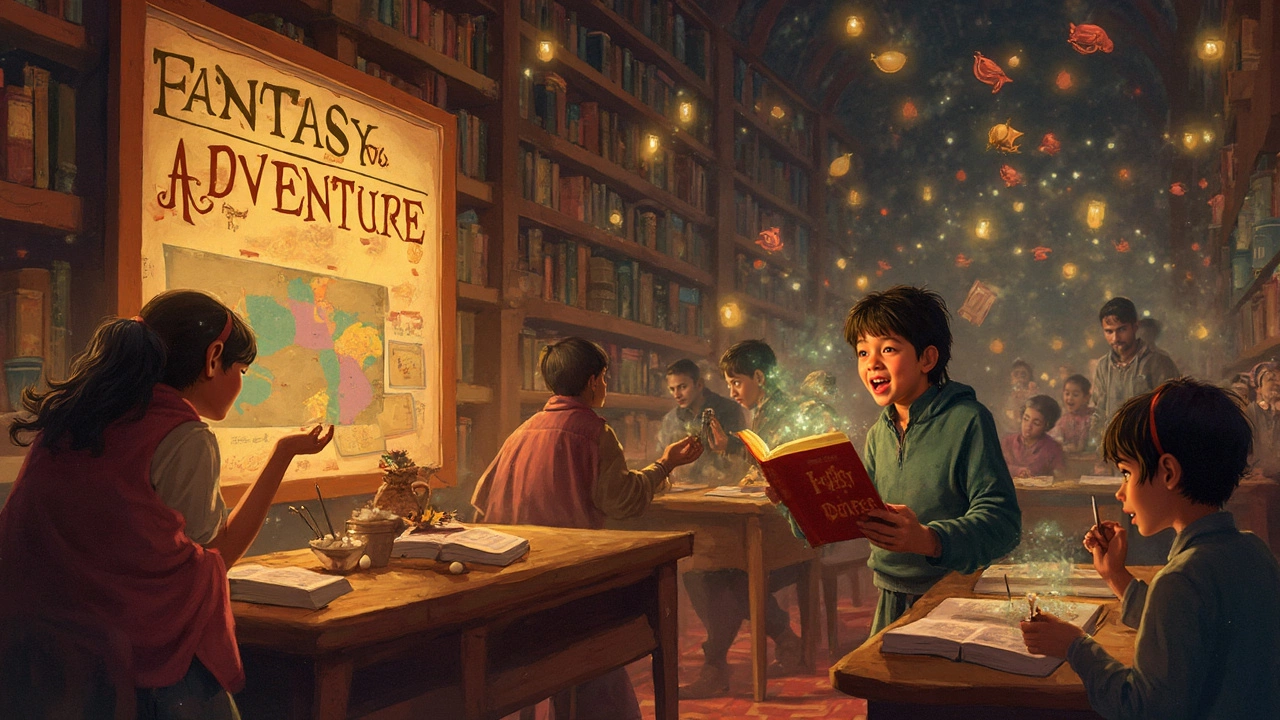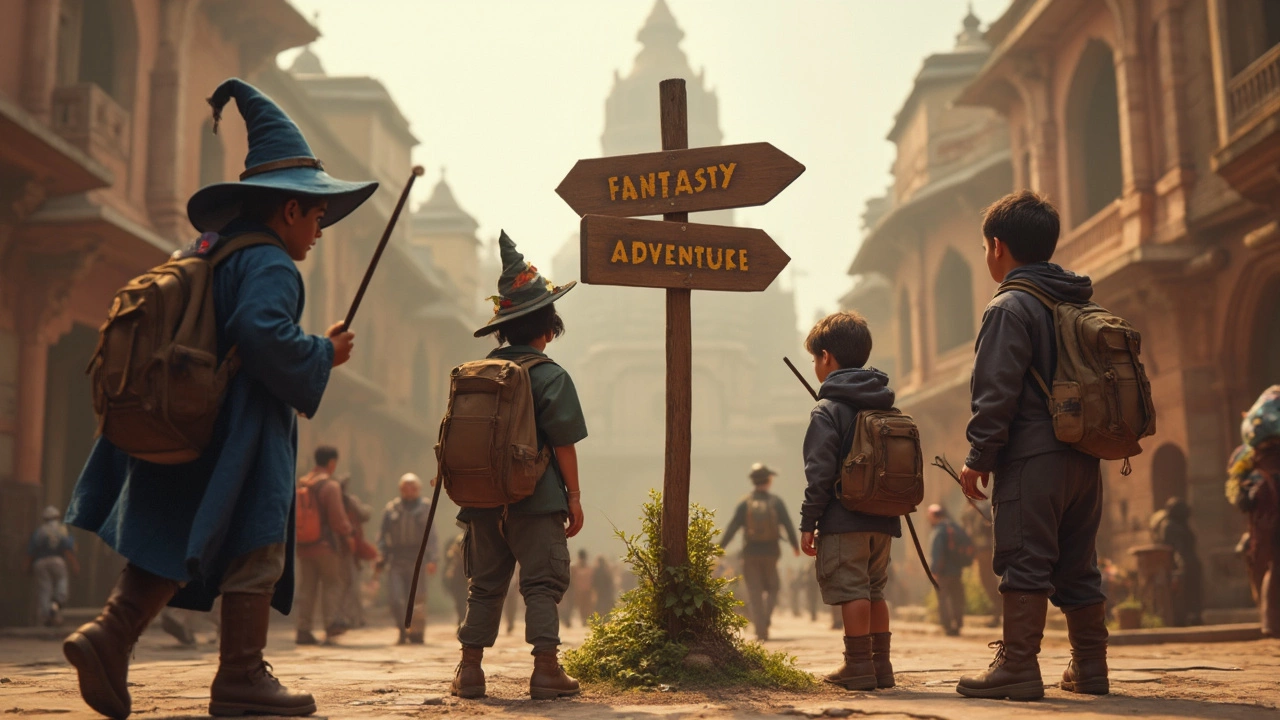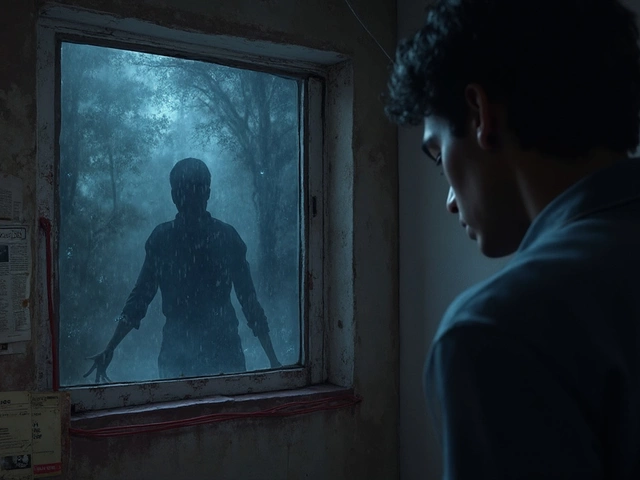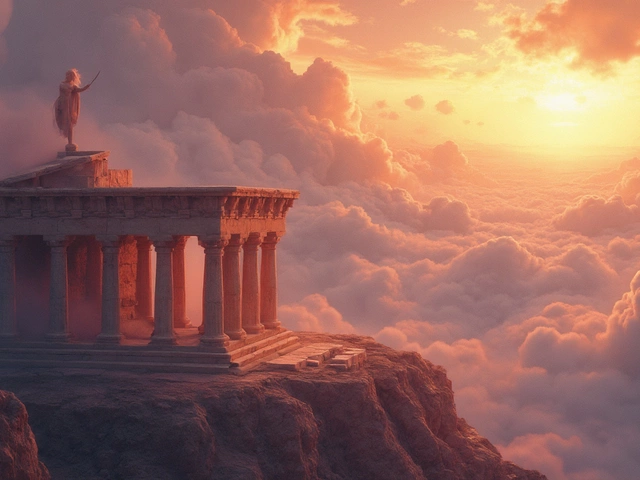
There’s always someone in a group chat who wants to argue about what makes Harry Potter so popular—its spells and wizards or nerve-wracking chases and quests? If you’ve wondered which box it really belongs in—fantasy or adventure—you’re not alone. Most people just lump it in as “fantasy,” but honestly, that barely covers it.
Genre labels can get pretty blurry, especially with a series as loaded as Harry Potter. Magic schools, dragons, and dark lords—sure, that's pure fantasy on the surface. But think about the non-stop action: the hunt for Horcruxes, running through dangerous forests, dueling on broomsticks. If adventure isn’t baked in, what is?
Knowing how these genres overlap doesn’t just make you sound smart in book club. It helps you pick stories you’ll actually like—especially if you’re tired of dull books that lean too hard on one side or the other.
- Breaking Down the Fantasy Elements
- Why the Adventure Side Can’t Be Ignored
- How the Two Genres Work Together
- Tips for Spotting Genre Mash-Ups in Books
Breaking Down the Fantasy Elements
First things first, Harry Potter is loaded with classic fantasy features. The world is stacked with wizards, witches, magical creatures, and hidden spells. Hogwarts doesn’t just run like a regular school—it’s got moving staircases, enchanted ceilings, and even ghosts hanging around the halls. If you walked into Ollivanders, you wouldn’t be shopping for a pencil or ruler; you’d be fitted for a wand that "chooses you." That’s as fantasy as it gets.
J.K. Rowling built a whole universe behind platform 9¾. You’ve got potions that make people shapeshift or even cheat death. There are magical creatures everywhere—think hippogriffs, basilisks, and house-elves. These aren’t just thrown in for show; they drive the plot, create problems, and open up unique solutions only possible in a fantasy world.
- Magical Objects: Wands, the Invisibility Cloak, the Marauder’s Map, and Horcruxes aren’t just cool—they move the story forward.
- Casting Spells: The simple “Expelliarmus” or “Expecto Patronum” aren’t just neat tricks. They’re plot tools and ways characters solve or even create problems.
- Prophecies & Destiny: The entire series runs on the backbone of an ancient prophecy. Classic fantasy vibes.
Looking at other well-known fantasy stories—like "The Lord of the Rings" or "Narnia"—you see the same things: a hidden world, ancient magic, and conflicts bigger than life. Harry Potter slides right in, ticking all those boxes. It just does it with more jokes, and more homework assignments.
| Classic Fantasy Feature | Harry Potter Example |
|---|---|
| Hidden Magical World | Wizards live undercover in the UK |
| Magical Creatures | Hippogriffs, Dementors |
| Powerful Artifacts | The Elder Wand, Sorcerer’s Stone |
| Epic Evil Villain | Voldemort |
So, when you see bookstores or streaming sites list Harry Potter under fantasy, it’s not just a random pick. The story is stuffed with every major hallmark you expect from the genre. If you’re hunting for pure magical escapism, Harry’s world absolutely delivers.
Why the Adventure Side Can’t Be Ignored
If you think Harry Potter is just about wands and spells, you’re missing a huge part of what hooks readers from the first book to the last. The series never stops moving. There are narrow escapes, dangerous missions, and showdowns that leave you sweating. The action isn’t just there for flair—it actually drives the story forward, giving the characters goals and pushing them to their limits.
Look at the setup in every single book. Harry doesn’t just hang around Hogwarts casting spells. He’s sneaking past three-headed dogs, outrunning dragons, racing through mazes, and battling for his life. The Triwizard Tournament in "Goblet of Fire" is straight-up adventure material with its deadly challenges. The search for the Sorcerer’s Stone takes a group of kids through a gauntlet of traps. And when the group is on the run in "Deathly Hallows," it’s pure quest drama—think maps, clues, near-captures, and some heavy double-crossing.
- The books almost always have a major quest or journey. These aren’t just background details; they’re the backbone of every story arc.
- Physical danger is everywhere—giant spiders, trolls, Dementors, even Voldemort himself. That’s the adventure vibe: risk, tension, and real stakes.
- The pace is intense. Chapters often end on cliffhangers. That "can’t put it down" feeling? That’s a classic sign of adventure stories.
Check out how adventure shapes each book in the series:
| Book | Main Adventure Highlight |
|---|---|
| Philosopher’s/Sorcerer’s Stone | Quest through magical obstacles to reach the Stone |
| Chamber of Secrets | Journey into the hidden chamber to save Ginny |
| Prisoner of Azkaban | Rescue of Sirius Black with time-turner hijinks |
| Goblet of Fire | Triwizard Tournament’s deadly tasks |
| Order of the Phoenix | Fighting Death Eaters at the Ministry of Magic |
| Half-Blood Prince | Searching for the Horcrux in the cave |
| Deathly Hallows | Journey across Britain to hunt down all Horcruxes |
If this sounds like the framework of every great adventure story you’ve read, you’re right. It’s why people return to these books over and over—not just for the magic, but for heart-pounding journeys where every choice counts.

How the Two Genres Work Together
Here’s where things get interesting: Harry Potter wouldn’t be the hit it is if it stuck to just one genre. The magic and creatures put it deep in fantasy territory, but the story structure leans heavily on adventure. Every year at Hogwarts, Harry and his friends are pulled into some kind of mystery or life-or-death challenge, so you always get that sense of movement and risk.
Take “The Goblet of Fire”—the Triwizard Tournament is basically pure adventure. You’ve got dragons, merfolk, even a deadly maze. But there’s no way these trials would land as hard without the distinct magical world that only fantasy can build. Each task is loaded with spells and creatures that you just don’t see outside of this mix.
The numbers back this up. Surveys by Scholastic (2016) showed that 71% of young readers were hooked on Harry Potter not only for the magic, but the breakneck action and unpredictability. That’s a rare combo in books that stick strictly to one genre.
Both genres do heavy lifting. Fantasy handles world-building—think spells, wands, house-elves, and a school that moves staircases for fun. Adventure keeps your heart pounding, setting up obstacles and forcing the characters to step up in ways that actually grow them as people.
- Fantasy lays down the rules: magic, creatures, history.
- Adventure pushes the characters to explore, fight, and solve urgent problems.
- Together, you get a story where magical twists feel urgent—nothing’s just for show.
If you’re ever confused by stories that blend genres, just look at Harry Potter as your cheat sheet. The perfect blend is what keeps readers from getting bored or craving something different mid-series. You’re not just watching people cast spells, you’re along for a wild ride—magic and mayhem, all wrapped up together.
Tips for Spotting Genre Mash-Ups in Books
It’s not always obvious when a story is crossing genre lines. With books like Harry Potter, things blend so smoothly that you might not notice until you step back and actually look. Here’s how you can spot these mixes, and why it matters if you want to find books as gripping as Harry Potter.
- Check the main goal: In straight-up fantasy, stories often focus on building a world—think magic rules or history. In an adventure story, the plot usually centers around a mission, quest, or chase. If a book is juggling both—like fighting a dark wizard in a world with flying hippogriffs—you’re looking at a true mix.
- Look at pacing: Pure fantasy can drag if it spends tons of time on backstory or worldbuilding. Genre mash-ups speed things up with action scenes, chases, or fights. When characters don’t get much time to rest, you’re in adventure territory.
- Pay attention to the threats: If the risks involve magical problems (like cursed objects) AND real action threats (cliffhangers, villain pursuits), that’s a mash-up. In Harry Potter, think about the Triwizard Tournament—magic everywhere, but also physical danger at every turn.
- Cast of characters: Adventure stories often have a tight team going through it all together, not just one loner hero. In fantasy, you might see bigger casts or focus on a “chosen one.” When you see a friend group dealing with epic problems, like the Harry-Ron-Hermione trio, it’s usually both.
One quick way to spot a genre mix is to look at the book's shelf in a store or library. You’ll often see the same title in both the fantasy and adventure stories sections. Retailers do this because they know readers crave both the magic and the action.
Check out this quick breakdown of mash-up markers in a handy table:
| Feature | Fantasy | Adventure | Harry Potter |
|---|---|---|---|
| Main Goal | Worldbuilding | Quest/Action | Both |
| Pacing | Slower, detailed | Fast, urgent | Mix |
| Threats | Magical, supernatural | Physical, real danger | Both |
| Teamwork | Not always central | Often key | Tight-knit trio |
Finally, when choosing your next read, snag a sample or flip to the middle. Ask yourself: Am I getting lore and magic tossed in with edge-of-your-seat scenes? If yes, you’re probably holding a genuine genre mash-up.


